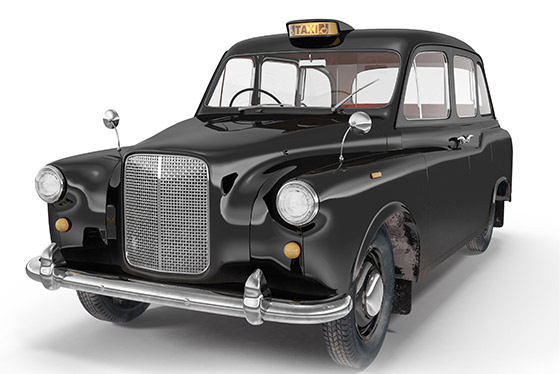Does a Joint Car Insurance Policy Exist? Which Policy is Parallel to it?
Does your family own several cars? Are you wondering whether there is a joint car insurance policy that covers insurance for all of them simultaneously? If yes, then Motor Floater Insurance is the perfect solution for you to escape all the inconvenience of filing paperwork for multiple insurances by allowing you to pay a single premium for all vehicles.
Mr. Sharma lives in a joint family like 6 out of 10 Indians. His family has ten members and they own three cars. Since every vehicle in India must have third-party insurance for at least three years to drive. Mr. Sharma took multiple insurance policies for each car and had different renewal dates for each car. He completed gazillions of formalities. Overall, the task was very troublesome for Mr. Sharma.
Do you want to know what Mr. Sharma didn’t know? You can now have multiple cars under one single insurance policy. Motor floater policy allows you to pay one single premium for all your vehicle. It reduces the paperwork making the whole procedure hassle-free.
How does this policy work?
Taking the same example, as mentioned, Mr. Sharma had three cars and, his insurance renewal dates were May, June, and October. The date is set as the last car’s renewal date (October). Until that date, the other two cars will have short-term covers, i.e. for the first car from May to October and for the second car from June to October. From October, all cars will renew on the same date yearly.
Motor Floater policies:
- This policy is for at least two and goes up to five cars.
- It eliminates the need to pay multiple premiums and keeps track of renewal dates of multiple insurance policies.
- The vehicle with the highest IDV is considered the primary vehicle, and other vehicles under the policy will be secondary vehicles.
- The IDV of the selected primary vehicle will be the sum insured amount of the motor floater policy.
Benefits of Motor Floater Policy:
- Eliminate Multiple premiums and paperwork: As mentioned, this policy will remove the need for various premiums. You have to pay one single premium for all vehicles. In addition, with multiple insurance policies, you would’ve required a lot of paperwork. In a joint insurance policy, there’s minimal paperwork.
- Relief from renewing multiple policies every year: Since it covers all renewal dates is one and, you don’t have to worry about renewing various policies.
- Usage-Based Premium: One of the best features under this policy is a usage-based premium where you have to pay a premium based on two important criteria 1. usage of vehicle 2. distance covered by the vehicle. Furthermore, if you drive carefully and follow traffic rules, the premium will be lowered.
- Flexibility: There is complete freedom and flexibility in adding and removing vehicles. It requires an easy procedure.
Limitations of the Motor Floater Policy:
- Financial burden: A single renewal date is a benefit as well as a drawback. Although, it is easy to remember. But with a single renewal date, it becomes a burden to pay a large premium all at once.
- All cars policy lapse: All vehicles come under one policy with one renewal date, so if you forget to renew the policy in the stipulated time, it will lapse, and all the cars under it will be uninsured.
- High-Risk Drivers Assessment: In this policy, the driver’s behavior plays a crucial role and, if it is a high-risk driver, then the premium for the policy will be high. Thus, it is important to analyze the driver before taking the joint insurance policy.
Policy Cancelation :
- If the primary vehicle suffers total loss, all vehicles under the policy will lose cover damage and the policy will be canceled.
- If all vehicles under the joint insurance policy lose in the same incident, the policy will be canceled.
- If any of the vehicles under the policy is already insured, the whole policy will be canceled.
ICICI Lombard, New India, HDFC Ergo and Bajaj Allianz General are few insurance companies that provide motor floater policies.
Components of coverage in the policy:
- Damages due to an accident
- Damage due to a natural calamity such as flood, earthquake, cyclone, etc.
- Damages due to theft
- Damage due to fire or electrical failures
Exclusions in the policy:
- Depreciation cost of the vehicle.
- Damages due to drunken driving
- Driving with a valid driving license
- Damage to the vehicle due to electrical or mechanical breakdowns
The joint car insurance policy was an international concept and is quite popular in foreign. In India the need for multiple car insurance has arisen recently. Everyone now has at least cars in their household.
Insurance companies in India, along with IRDAI (Insurance Regulatory Development Authority of India), saw this shift and finally got the concept to India to make it less complicated and more convenient for the public to have multiple cars without multiple insurance policies.
Motor Floater Policy is a great concept for both the insurance providers as well as the public, and the market will only increase as people become aware of this policy. Before buying the policy, make sure you need all the pros and cons of the same.
FAQs
How many cars can be insured under the motor floater policy?
The minimum number of cars insured is two, and the maximum of five cars can be insured under the policy.
Will taking the motor floater policy reduce the cost of insurance?
Yes, it will reduce your insurance cost. The policy follows usage-based premium so, if you aren't using your other vehicles, the premium will be lowered.





























